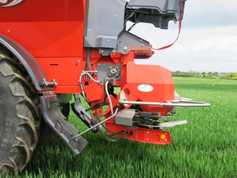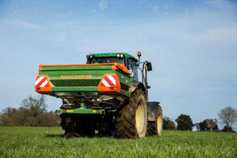With grass growth rates increasing, this week we look at how the implementation of paddock grazing on some of the farms in the Teagasc-Irish Farmers Journal BETTER farm programme. Des and Frank Beirne joined the second phase of the programme in 2012. As part of their farm plan, the target was to increase the stocking rate from 1.55LU/ha in 2011 to 2.3LU/ha. They are currently carrying a stocking rate of much greater than this through the purchase of 50 extra bulls for finishing, along with their own stock.
The increase in stocking rate came about gradually; at the same time, the farm increased the amount of grass grown to meet the increasing demand. In 2011, the farm grew 7.0tDM/ha; in 2014, they almost doubled grass production to 13.5tDm/ha. This was done through a mixture of rotational grazing using a paddock system, growing grass in three weeks and grazing in three days or less and by improving soil fertility through the implementation of a reseeding programme.
It is one thing being able to grow more grass, but it is pointless unless you are able to utilise the grass grown and convert it into beef.
At the same time as they started to increase the stocking rate, they applied lime to raise the pH of the soil to the target of 6.2 and started to apply more compound fertilizers to improve the P and K index of the soil. They are reseeding approximately 10 acres per year, but this varies, depending on the field size which is earmarked for reseeding.
Splitting fields
Because the Beirnes were unsure of the numbers of stock which they would be carrying on the farm in the first few years, they did not put permanent paddocks in place. Instead, they used temporary electric fences; pigtail electric fence steaks, and reels to create a paddock system on the farm. At peak, they can run up to 12 different groups of stock on the farm, so there needs to be flexibility. The herd of 95 cows run in three to four groups, with autumn and spring herds split for breeding. Bulls are grazed in groups of 15 and heifers in larger groups. Many large fields have been split with permanent fences. These fields can be further subdivided using temporary electric fences.
Since joining the programme, they have split what was 11 different fields into 30 subdivisions. Frank and Des acknowledge that moving drinkers in fields, along with placing additional drinkers, brings significant cost. They have added a few extra drinkers, but not all have been relocated.
Des operates a simple cost-effective system. Instead of investing in additional drinkers, in some cases he focuses on splitting fields like the spokes of a wheel from the drinker to ensure that cattle continue to have access to water while getting regular allocations of grass. They have opted to divide larger, square fields, in four, with one drinker serving many paddocks.
Temporary wires
The use of temporary electric fences cannot be overemphasised. Des is a firm believer in allocating no more than three days’ grass to cattle.
Bulls are often changed and given a fresh allocation of grass daily in wet or unsettled weather. They firmly believe in the need to utilise a back fence when grazing groups like the bulls. Along with reducing ground damage, they have seen the benefits it brings in terms of grass growth. A three-fence system is operated, particularly during early spring, to ensure that bulls cannot move over areas already grazed.
Temporary drinkers
Several farmers in the programme have opted to use small plastic drinkers, which they move along through large fields as a cost-saving method of providing water.
One issue that can arise with this method is leaks at the joint into the ballcock. However, some farmers have got around this by placing a metal bracket on the drinker to stop the pipe moving. One farmer in the programme made a metal frame for a plastic drinker and uses a quad to move it across the field, as needed, which reduces the need to empty troughs regularly.
The targets are simple – to grow grass in three weeks and graze it in three days or less. In some cases, daily allocations of grass are given to minimise ground damage and maximise intake. Using a paddock system has the benefit of increasing total grass production as paddocks. The target pre-grazing height is 8cm to 10cm (1,300kg Dm/ha to 1,500kg Dm/ha). The rotation length should be about 21 days during the main growing season. Where three-day paddocks are in operation, seven paddocks are required.






 This is a subscriber-only article
This is a subscriber-only article











SHARING OPTIONS: